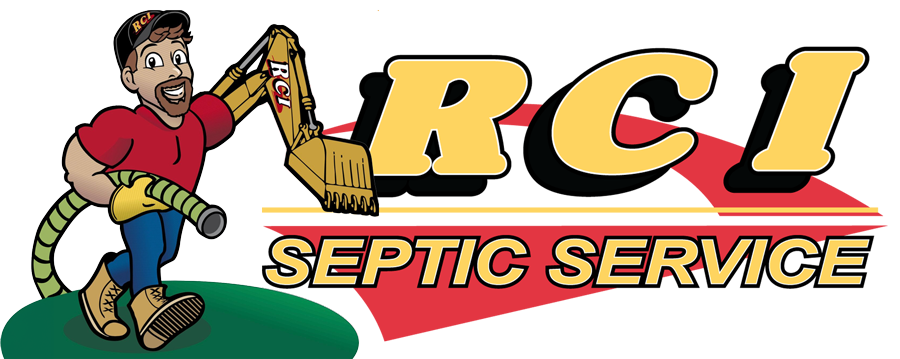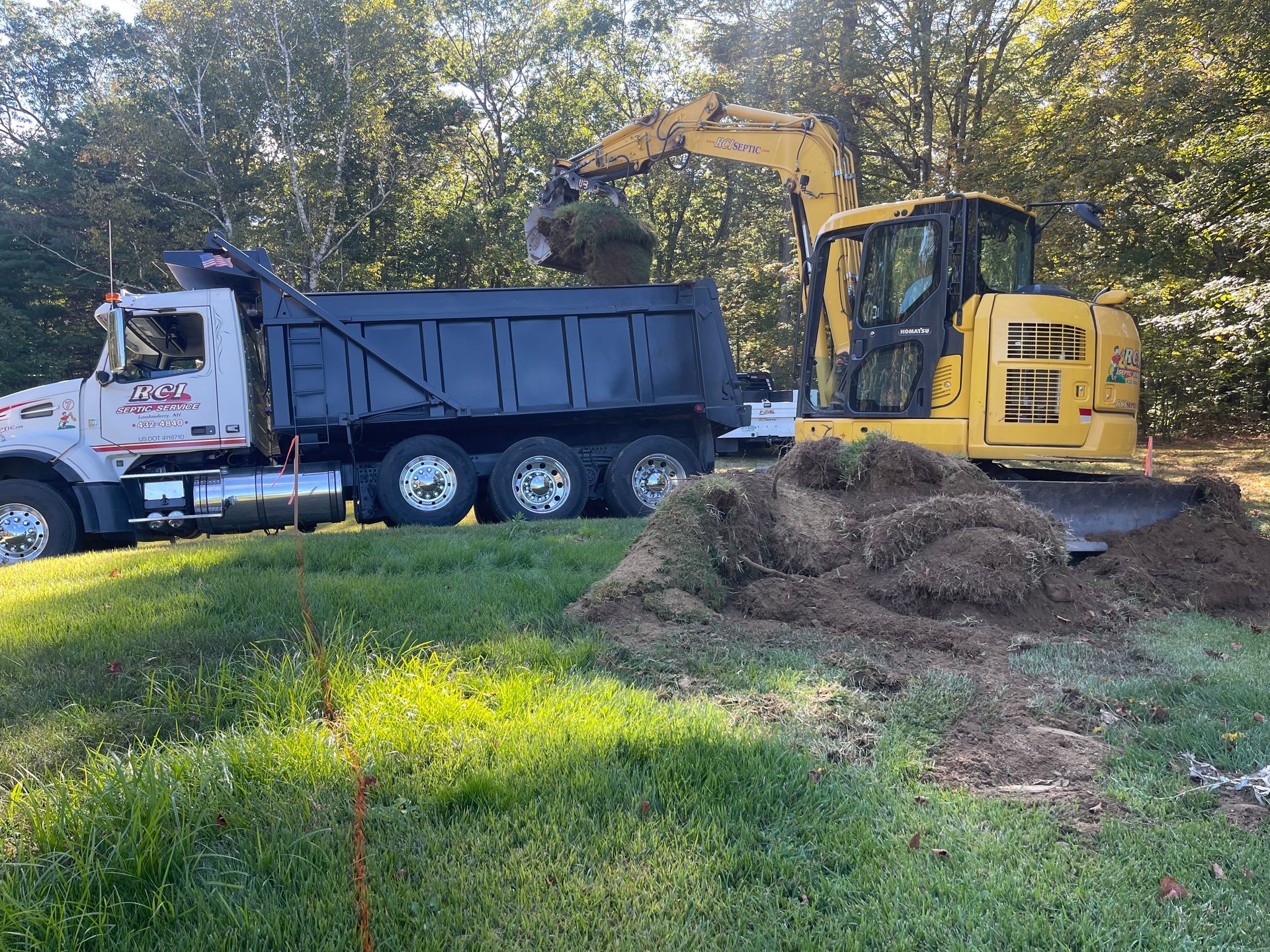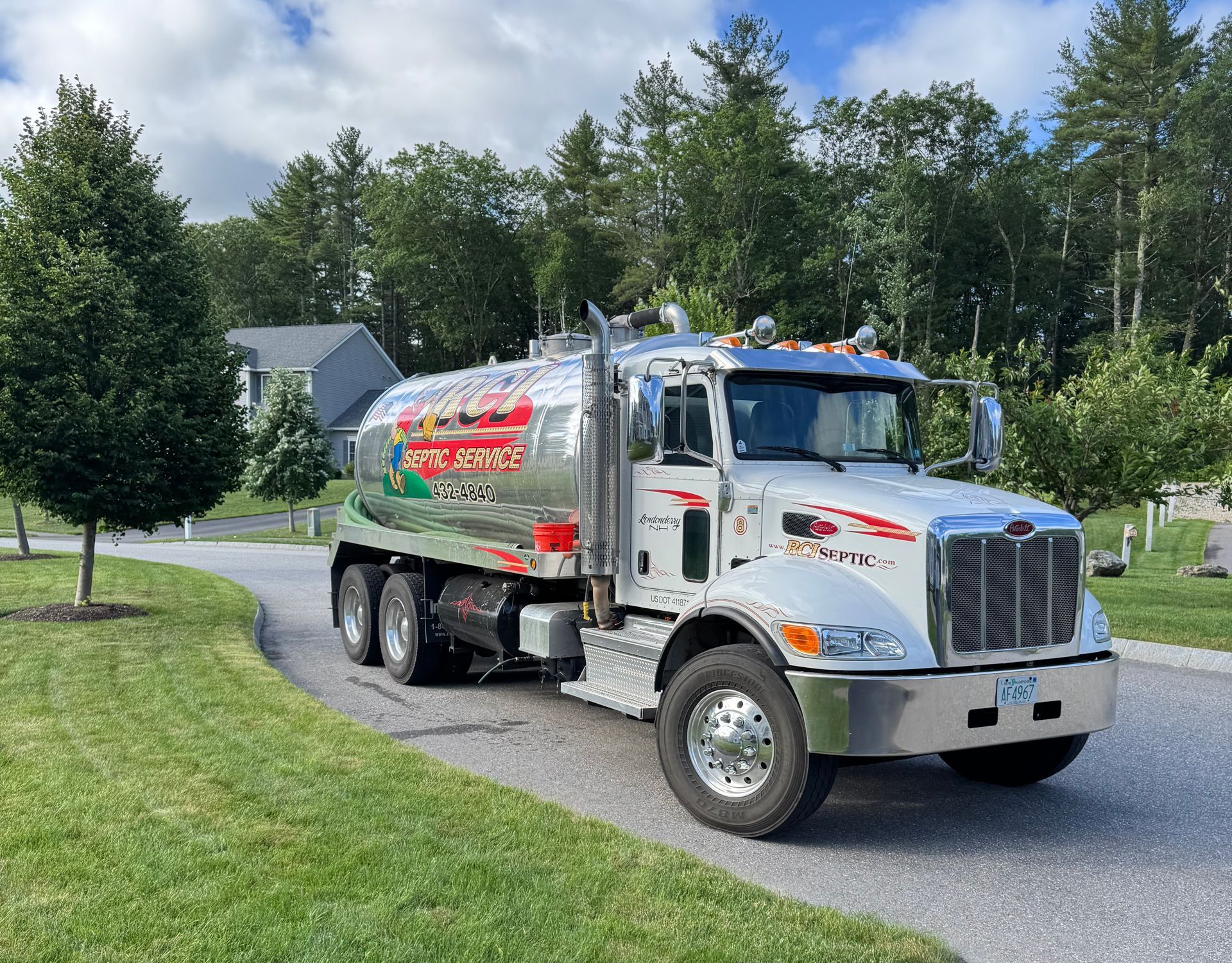Septic Longevity: 10 Expert Tips to Make Your Septic System Last 25 Years
Your septic system could fail tomorrow, costing you between $23,000 to $35,000 depending on system design and requirements. Or you could invest in smart maintenance today and enjoy 25+ years of reliable service from your septic system.
Most homeowners don't realize that with proper maintenance, septic systems can far exceed their average lifespan of 20-25 years. A properly maintained septic system can provide decades of reliable wastewater treatment, while a neglected one might fail in just 15 years, leading to expensive repairs and environmental hazards.
At RCI Septic Service, we've spent over 25 years helping New Hampshire families extend their septic system longevity through proven maintenance strategies. As a fourth-generation, family-owned business in Londonderry, NH, we've seen firsthand how proper care transforms a failing septic system into a well maintained system that serves families for decades.
The difference between a 15-year system failure and 25+ years of reliable service often comes down to following expert guidelines. In this comprehensive guide, we'll share the 10 essential tips that can help your septic system reach its full potential while helping you avoid costly repairs.
Why Septic System Longevity Matters
Understanding septic system longevity isn't just about saving money—though the financial benefits are substantial. When septic systems fail prematurely, homeowners face high replacement costs, not including potential property damage from sewage backups or environmental cleanup costs. These are real numbers that New Hampshire homeowners face every year when their systems fail unexpectedly.
Proper maintenance extends the average lifespan from the typical 20-25 years to 25+ years or more. A well maintained system provides reliable service while protecting groundwater and avoiding the disruption of emergency repairs. Older septic systems that receive regular maintenance often outperform newer, neglected ones, demonstrating that consistent care matters more than system age alone.
The main components of septic systems—the septic tank, drain field, and connecting pipes—all benefit from preventive care. When homeowners understand what makes systems fail, they can take proactive steps to ensure their septic tanks require minimal emergency intervention. Each component plays a vital role in the system's overall performance, and neglecting any single element can compromise the entire system's functionality.
Common factors that affect system longevity include irregular pumping schedules, excess water usage, improper waste disposal, and lack of professional inspection. Environmental factors like soil conditions, tree roots, and heavy traffic over the system also play crucial roles in determining useful life. Understanding these factors empowers homeowners to make informed decisions that protect their septic system investment.
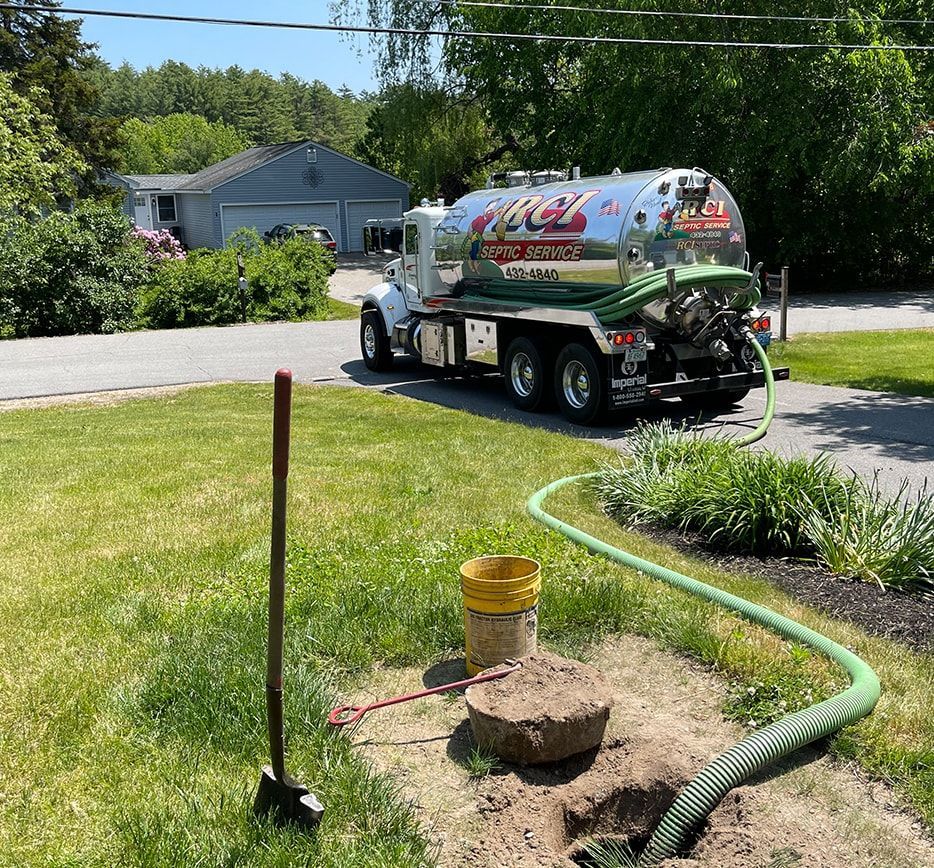
Tip 1: Follow RCI's Proven Pumping Schedule
Regular septic tank pumping forms the foundation of septic system longevity. At RCI Septic Service, we've developed specific recommendations based on household size and usage patterns that consistently help our customers achieve 25+ year system performance. These recommendations come from decades of hands-on experience with thousands of New Hampshire septic systems.
Our proven pumping schedule recommends yearly pumping for households with 5 or more members, pumping every 2 years for families of 3-4 people, and pumping every 3 years for 1-2 person households. These intervals prevent sludge buildup that can clog pipes and damage the drain field beyond repair. Following these guidelines religiously has helped our customers avoid the majority of septic emergencies we see in the field.
When septic tanks aren't pumped regularly, solid waste accumulates and eventually flows into the leach field, causing permanent damage. Professional pumping removes accumulated sludge and scum layers, allowing the tank to function properly and protecting the entire system. The cost of regular pumping is minimal compared to the expense of drainfield replacement, which can run into tens of thousands of dollars.
Signs that your tank needs to be pumped include slow drains throughout the house, gurgling sounds from drains or toilets, sewage odors in your yard, or pooling water near the septic tank. If you notice these warning signs, immediate pumping can prevent system failure and expensive repairs. Don't wait until you have a sewage backup in your home—by then, the damage may already extend to your drainfield.
Professional pumping ensures complete waste removal and allows technicians to inspect tank condition, baffles, and inlet/outlet pipes. Our technicians use specialized equipment and expertise to thoroughly clean your tank while identifying potential problems before they become emergencies.
Tip 2: Practice Smart Water Conservation
Excess water represents one of the biggest threats to septic system longevity. When households overwhelm their systems with too much wastewater, even well-designed septic systems can fail prematurely due to hydraulic overload. The drainfield can only process a certain volume of water per day, and exceeding this capacity prevents proper wastewater treatment.
Smart water conservation starts with fixing leaky faucets, which can add hundreds of gallons daily to your septic system load. A single dripping faucet wastes enough water over time to significantly impact system performance and reduce lifespan. What seems like a minor leak can actually force your system to process thousands of extra gallons per month, accelerating wear and reducing treatment efficiency.
Install water-efficient fixtures throughout your home, including low-flow toilets, showerheads, and faucet aerators. These simple upgrades reduce daily water usage without sacrificing comfort, giving your septic system more time to properly treat wastewater. Modern low-flow fixtures have improved dramatically in recent years, providing excellent performance while using significantly less water than older models.
During high-usage periods like holidays, be especially mindful of water consumption. Guest visits, extra showers, and increased toilet usage can quickly overwhelm a system that normally functions properly under regular usage patterns. Plan ahead for these events by being extra careful about water use and avoiding unnecessary high-water activities during peak times.
Tip 3: Guard Your Drains Against Harmful Materials
Protecting your drains from harmful materials is essential for maintaining septic system longevity. The golden rule for septic systems is simple: only human waste, toilet paper, and wastewater should enter your system. Everything else poses a risk to your system's health and longevity, from minor nuisances to major threats that can cause complete system failure.
Never flush feminine hygiene products, paper towels, wipes (even those labeled "flushable"), dental floss, cat litter, or any non biodegradable items. These materials don't break down in septic tanks and can clog pipes or accumulate in the tank, requiring more frequent pumping. We've seen systems completely overwhelmed by accumulated wipes, requiring emergency pumping and expensive repairs.
Harsh chemicals like bleach, antibacterial soaps, and drain cleaners kill the beneficial bacteria essential for breaking down solid waste in your septic tank. Use septic safe cleaning products that won't disrupt the biological processes keeping your system functioning properly. Your septic tank is essentially a living ecosystem, and harsh chemicals can destroy the delicate bacterial balance needed for proper waste decomposition.
Avoid using a garbage disposal if possible, as food waste adds unnecessary solid material to your septic system. If you must use one, do so sparingly and avoid grinding grease, fats, coffee grounds, or fibrous materials that don't decompose easily. Composting food waste is a much better alternative that keeps unnecessary solids out of your septic system while creating valuable garden material.
Never pour grease, cooking oils, paint, medications, or automotive fluids down any drain in your home. These substances can coat pipes, kill beneficial bacteria, or contaminate groundwater, leading to serious environmental and system problems. Grease is particularly problematic because it solidifies in your pipes and drainfield, creating blockages that can be extremely difficult and expensive to remove.
Tip 4: Protect Your Drainfield Investment
Your drain field represents the most expensive component of your septic system, and protecting it is crucial for achieving 25-year septic system longevity. Once damaged, drainfields typically require complete replacement rather than repair. A new drainfield installation can easily cost up to $25,000 or more, making protection of your existing drainfield a top priority.
Never park vehicles, heavy equipment, or allow any heavy traffic over your drainfield area. The weight compacts soil, crushes pipes, and reduces the soil's ability to filter wastewater properly. Even occasional parking can cause permanent damage. We've seen drainfields destroyed by a single incident of heavy equipment driving over them, requiring complete replacement that could have been avoided.
Maintain proper landscaping around your drainfield by planting only shallow-rooted grasses and avoiding trees or large shrubs. Deep-rooted plants can invade pipes and disrupt the soil structure necessary for proper wastewater filtration. Tree roots seeking moisture will grow directly into your drainfield pipes, creating blockages and causing system failure that requires extensive excavation to repair.
Learn to identify your drainfield location and watch for warning signs of damage, including soggy areas, unusually lush grass growth, or standing water during dry weather. These signs often indicate system failure requiring immediate professional attention. The bright green, lush grass that some homeowners mistake for healthy growth is actually a sign that untreated sewage is reaching the surface—a serious health hazard requiring urgent intervention.
Keep the drainfield area accessible for inspections and potential repairs. Avoid building structures, installing patios, or placing permanent landscaping features that could interfere with future maintenance needs. While it's tempting to landscape over your drainfield, doing so can make necessary repairs exponentially more expensive and difficult when problems arise.
Tip 5: Choose Septic-Safe Cleaning Products
The cleaning products you use daily can significantly impact septic system longevity by either supporting or destroying the beneficial bacteria essential for waste breakdown. Choosing septic-safe alternatives protects your system's biological processes. Every time you clean your home, you're making decisions that affect your septic system's health and longevity.
Avoid cleaning products containing bleach, ammonia, phosphates, or antibacterial agents that kill the microorganisms responsible for breaking down waste in your septic tank. Many conventional household cleaners can disrupt biological activity for weeks after use. A single large cleaning session with harsh chemicals can set back your system's bacterial population significantly, reducing treatment efficiency for an extended period.
Look for cleaning products specifically labeled as septic-safe or biodegradable. Natural alternatives like vinegar, baking soda, and castile soap provide effective cleaning without harming your septic system's delicate bacterial balance. These natural products have been used for generations and remain highly effective for most household cleaning tasks while being completely safe for septic systems.
Read product labels carefully, as some products marketed as "natural" still contain ingredients harmful to septic systems. When in doubt, research specific ingredients or consult with septic professionals about product safety. The term "natural" isn't regulated, so products with this label may still contain septic-damaging chemicals.
Limit the use of even septic-safe cleaning products, as excessive amounts of any cleaning agent can overwhelm your system. Use minimal quantities and space out heavy cleaning sessions to give your system time to recover between exposures. Your septic system can handle reasonable amounts of septic-safe products, but dumping large quantities of any cleaner can temporarily disrupt the bacterial balance.
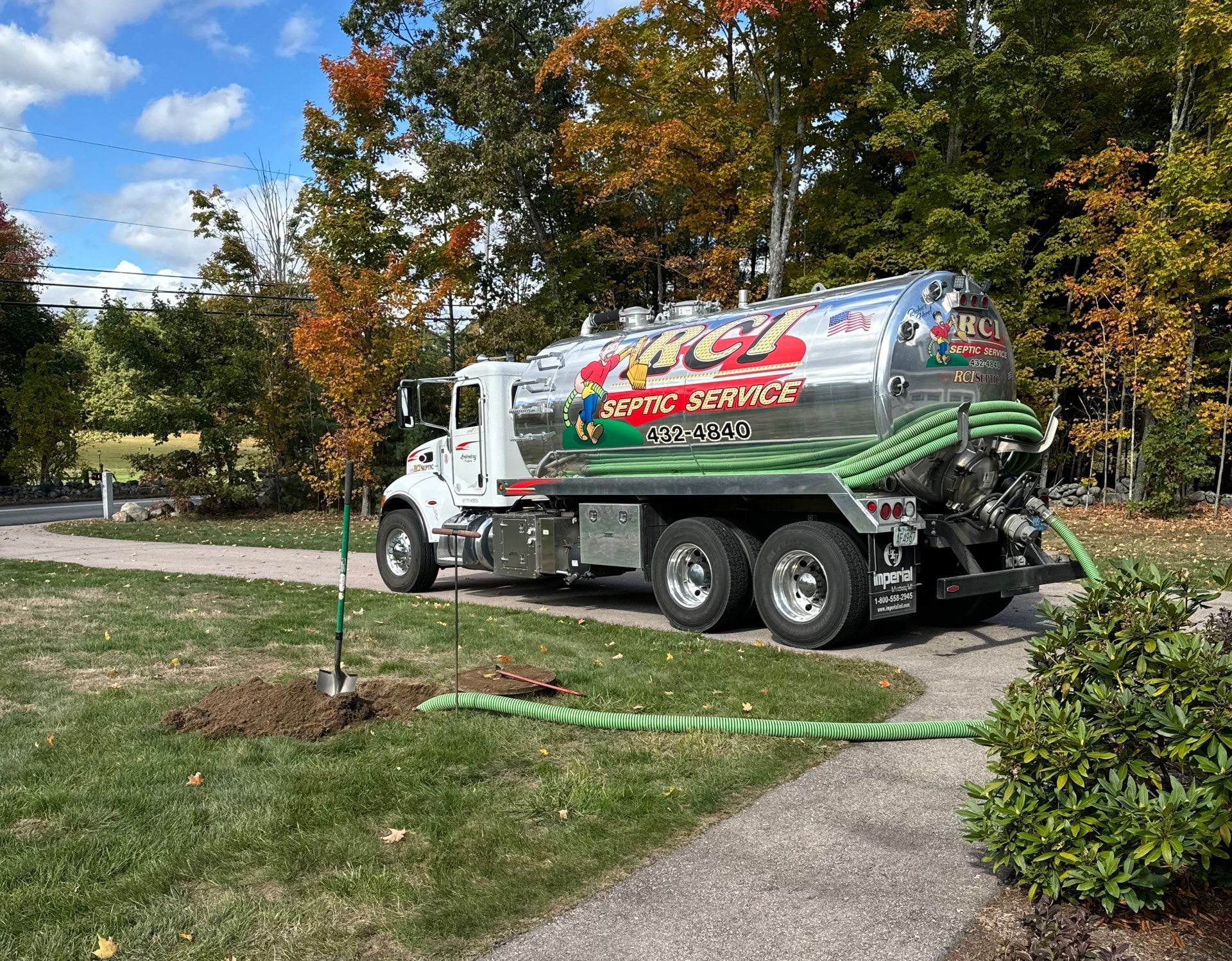
Tip 6: Septic Inspections
Regular professional inspection represents one of the most cost-effective ways to ensure septic system longevity. At RCI Septic Service, our technician visually inspects many different factors during a routine septic pumping.
During routine pumping, our technicians examine septic tank condition, check baffles for damage if they are visible, the condition of the septage is noted and the fluid level in the septic tank. Early detection of minor issues prevents major system failures that could cost thousands in repairs. We use have decades of experience to spot problems that homeowners would never notice until they become serious emergencies.
Tip 7: Monitor Warning Signs Like a Pro
Learning to recognize early warning signs of septic tank issues can prevent minor problems from becoming system failures. Homeowners who monitor their systems regularly often catch problems when repairs are still affordable and manageable. Being observant and proactive can save you thousands of dollars and prevent the stress and disruption of a septic emergency.
Early warning signs include slow drains in multiple fixtures, gurgling sounds from drains or toilets, and occasional sewage odors near the septic tank. These symptoms often indicate the tank needs pumping or has developed minor blockages. Don't dismiss these signs as temporary issues—they're your system's way of telling you something needs attention.
Advanced warning signs requiring immediate professional attention include sewage backups, standing water in the yard, consistently soggy areas over the drainfield. These symptoms typically indicate serious problems requiring emergency service. If you experience any of these advanced symptoms, contact a professional immediately—delays can lead to more extensive damage and higher repair costs.
Document any unusual symptoms, including when they occur, their severity, and any potential contributing factors. This information helps septic professionals diagnose problems more accurately and develop effective solutions. Keep a simple log noting dates, symptoms, and circumstances—this record becomes invaluable when working with technicians to solve persistent problems.
Never ignore warning signs hoping they'll resolve on their own. Septic tank issues typically worsen over time, and early intervention almost always costs less than emergency repairs or system replacement. We've seen countless situations where a homeowner's delay in addressing minor warning signs resulted in complete system failure that could have been prevented with prompt attention.
Tip 8: Know Your System Inside and Out
Understanding your specific septic system layout, age, and specifications empowers you to make informed maintenance decisions that support long-term system longevity. Knowledge of your system helps you communicate effectively with service professionals and spot potential problems. The more you know about your system, the better equipped you are to protect it and maintain it properly.
Locate your septic tank, distribution box, and drainfield boundaries using your property's "as-built" drawings or septic permit records. Mark these locations clearly and keep measurements from permanent landmarks like your house or driveway. This information becomes crucial during emergencies when technicians need to access your system quickly, and it prevents accidental damage during landscaping or construction projects.
Determine your system's age and expected lifespan based on installation date, tank material, and maintenance history. Older septic systems may require more frequent inspections and proactive maintenance to achieve 25-year performance. Understanding your system's age helps you anticipate when components might need replacement and budget accordingly.
Maintain comprehensive records of all septic system services, including pumping dates, inspection reports, repair work, and any system modifications. These records help track system health and can identify patterns that predict future maintenance needs. A complete maintenance history also demonstrates responsible ownership if you decide to sell your property.
Create a simple maintenance calendar noting pumping schedules, inspection due dates, and seasonal maintenance tasks. Proactive scheduling prevents service delays that could compromise system performance. Set reminders on your phone or calendar to ensure you never miss critical maintenance windows, and schedule services well in advance to ensure availability during busy seasons.
Tip 9: Maintain Strategic Landscaping
Proper landscaping around your septic system protects critical components while maintaining your property's aesthetic appeal. Strategic plant choices and placement can actually enhance system performance while preventing costly damage. Well-planned landscaping serves multiple purposes: protecting your system, marking boundaries for future maintenance, and enhancing your property's appearance.
Plant only shallow-rooted grasses and small shrubs near septic components, avoiding trees with aggressive root systems like willows, maples, and poplars that can invade pipes and damage tank walls. Tree roots seeking water can cause extensive damage requiring expensive repairs. We've excavated drainfields completely destroyed by tree roots, with pipes crushed and filled with root masses that required complete system replacement.
Maintain appropriate distances from septic components when planting: keep trees at least 50 feet from the drainfield, large shrubs at least 10 feet away, and avoid planting anything directly over the septic tank or distribution box. These distance recommendations aren't arbitrary—they're based on decades of experience with root-damaged systems and represent the minimum safe distances for different plant types.
Use landscaping to prevent surface water from flowing toward your septic system, which can overwhelm the drainfield and reduce system efficiency. Proper grading and strategic plantings direct runoff away from critical areas. Excess surface water infiltrating your drainfield reduces its capacity to process wastewater from your home, potentially causing system failure during heavy rain events.
Create attractive, functional landscaping that clearly marks septic system boundaries while maintaining easy access for maintenance and inspections. Well-planned landscaping protects your investment while enhancing property value. Consider using decorative elements like small shrubs or flowers to mark component locations in ways that look intentional and attractive while serving a practical purpose.
Tip 10: Educate Everyone in Your Household
Septic system longevity depends on consistent proper use by everyone in your household. Education ensures that family members, guests, and renters understand how their daily habits affect system performance and lifespan. A septic system is only as reliable as its weakest link—one person's careless habits can undermine everyone else's careful maintenance efforts.
Teach family members the basic rules: only toilet paper and human waste go down toilets, limit harsh chemicals, conserve water, and report any unusual symptoms immediately. Children especially need clear, age-appropriate guidelines about septic system care. Make septic system education a normal part of household training, just like teaching kids about energy conservation or recycling.
Create household rules and post reminders near toilets and sinks highlighting what not to flush or pour down drains. Visual reminders help guests and family members make septic-safe choices automatically. Simple, clear signage in bathrooms and kitchens serves as a constant reminder of proper septic system use without requiring repeated verbal reminders.
Prepare clear guidelines for guests and renters explaining your septic system's requirements. Many people from areas with municipal sewer systems don't understand septic system limitations and may unknowingly cause damage. A simple welcome packet or posted information sheet can prevent well-meaning guests from inadvertently harming your system through unfamiliarity with septic system care.
Make septic system education an ongoing conversation rather than a one-time discussion. Regular reminders help maintain good habits and ensure everyone stays informed about protecting your system investment. Seasonal reminders, like before holiday gatherings when water usage increases, help keep septic system care top of mind for everyone in the household.
Why Trust RCI Septic Service for Your Septic Longevity
RCI Septic Service brings over 25 years of septic system expertise to New Hampshire homeowners seeking maximum system longevity. As a fourth-generation, family-owned business based in Londonderry, NH, we understand the unique challenges facing local septic systems. Our deep roots in the community mean we're invested in our customers' long-term success—we're not just providing a service, we're building lasting relationships with the families we serve.
Our team, led by Rich, Carolyn, and Kyle, combines decades of hands-on experience with the latest septic technologies to provide comprehensive services including pumping, repair, replacement, installation, and ejector pump services. We specialize in eco-friendly setups that maximize both performance and environmental protection. Our family's four generations of septic industry experience means we've seen and solved virtually every septic problem imaginable.
We've helped countless New Hampshire families achieve 25+ year septic system performance through our proven maintenance programs and expert guidance. Our customers consistently report extended system life, reduced emergency repairs, and significant cost savings compared to reactive maintenance approaches. The relationships we've built with families over decades demonstrate our commitment to quality service and customer satisfaction.
RCI Septic Service stays current with evolving septic technologies and regulations, ensuring our customers benefit from the most effective maintenance strategies available. Our commitment to customer education empowers homeowners to protect their septic investments for decades. We believe that informed customers make better decisions about their systems, so we take time to explain what we're doing and why it matters.
Our comprehensive approach addresses every aspect of septic system longevity, from routine maintenance to emergency repairs, with a focus on preventing problems before they become expensive crises. We treat every customer's system with the same care we'd give our own family's property. When you work with RCI Septic Service, you're not just hiring a contractor—you're gaining a trusted partner in protecting one of your home's most critical systems.
Start Your 25-Year Septic Journey Today
Following these 10 expert tips can transform your septic system from a potential liability into a reliable asset that serves your family for 25+ years or more. The key to septic system longevity lies in consistent preventive care rather than reactive emergency repairs. Every day you invest in proper maintenance is a day you're protecting your home, your investment, and your family's health and comfort.
Start immediately by scheduling your next septic tank pumping if it's been more than the recommended interval for your household size. Early action on pumping and professional inspection can prevent minor issues from becoming major system failures. Don't wait for warning signs—by the time problems become obvious, damage may already be extensive and expensive to repair.
Remember that every day you delay proper maintenance shortens your system's useful life and increases the risk of expensive repairs. The small investment in regular pumping, inspections, and proper care pays enormous dividends in system longevity and peace of mind. When you consider that a new septic system costs $30,000 to $40,000 or more, spending a few hundred dollars annually on maintenance is clearly the smart financial choice.
Don't wait for warning signs to appear before taking action. Proactive maintenance keeps your septic system functioning properly while avoiding the stress and expense of emergency repairs or premature replacement. The homeowners who achieve 25+ year system performance are those who treat their septic systems as valuable assets worthy of regular attention and care.
Take the first step toward 25-year septic system longevity by contacting RCI Septic Service today. Our experienced team can assess your current system condition, develop a personalized maintenance plan, and help you implement the strategies that ensure decades of reliable service. We'll work with you to create a maintenance schedule that fits your household's needs and budget while maximizing your system's lifespan.
Visit https://www.rciseptic.com to learn more about our comprehensive septic services and schedule your free consultation. Let our 25+ years of experience help your septic system reach its full potential while protecting your family's investment for decades to come. Your septic system is too important to neglect—start protecting it today with the expertise and care that only RCI Septic Service can provide.
